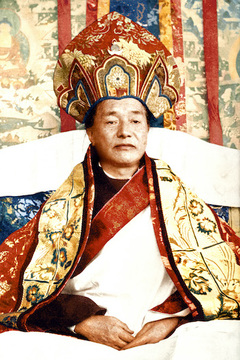Dudjom Rinpoche Series
English (63) | Deutsch (9) | Español (8) | Français (21) | Português (5) | Nederlands (1) | 中文 (9) | བོད་ཡིག (63)
We present the following texts by Kyabje Dudjom Rinpoche Jikdral Yeshe Dorje (bdud 'joms 'jigs bral ye shes rdo rje, 1904–1987), the renowned yogi and scholar and first appointed head of the Nyingma school in exile:
Advice
Aspiration Prayers
Benefits
Commentaries
Consecration
Dharma Protectors
Dzogchen
Empowerment
Guru Rinpoche Prayers
A Joyful Chariot for the Fortunate: An Aspiration to Travel to the Copper-Coloured Mountain of Glory
Lineage Prayers
Long-Life Prayers
Ngöndro
Offering
Praise
Prayers
Sādhanas
Sang Offering
by Lhatsün Namkha Jigme, arranged by Dudjom Rinpoche
